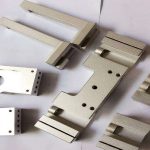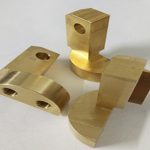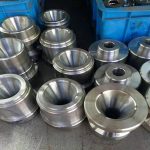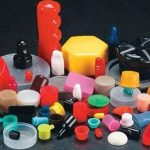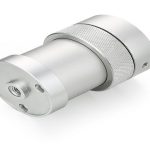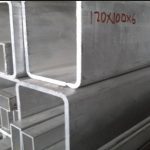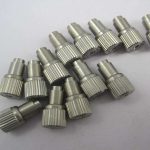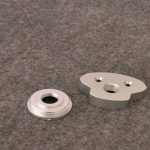What are the commonly used materials for 3D printing?
①ABS plastic
ABS is currently the most widely used polymer. It combines various characteristics of PS, SAN, BS, and has the characteristics of hard, hard, and hard. abs is a terpolymer of acrylonitrile, butadiene and styrene. A represents acrylonitrile, B represents butadiene, and S represents styrene.
ABS plastics are generally opaque, milky white, non-toxic and tasteless, with excellent impact strength, good dimensional stability, electrical properties, abrasion resistance, chemical resistance, abrasion resistance, molding processing and mechanical processing.
②PLA plastic
Polylactic acid (pla) is a new type of biodegradable material, which is a starch material prepared from renewable plant resources such as corn. Polylactic acid has good compatibility, degradability, mechanical properties and physical properties. Suitable for blow molding, thermoplastic and other processing methods. The process is simple and versatile. At the same time, it has good gloss and transparency, good tensile strength and ductility.
(3D printed electric guitars are made of tough materials)
The pla and abs materials can be made of multiple materials, and there are many overlaps. Therefore, it is difficult to judge from the ordinary product itself. ABS is observed to be matte and ** is very bright. When heated to 195°C, pla can be extruded smoothly, but abs can not. When heated to 220°C, ABS can be extruded smoothly, and bulging bubbles will appear in PLA, and it can even be carbonized. Carbonization can clog the nozzle, which is very dangerous.
③Engineering plastics
Engineering plastics are industrial plastics used as industrial parts or housing materials. Compared with other materials, it has the balance advantages of strength, impact resistance, aging resistance and hardness. Therefore, it is also the most widely used material in 3D printing. Commonly used engineering plastics include industrial abs materials, pc materials, nylon materials and so on.
Industrial ABS material
It is one of the most commonly used engineering thermoplastics in FDM (melt deposition modeling). It has the advantages of high strength, good toughness and impact resistance. The normal deformation temperature exceeds 90°C. It can be used for processing (drilling, tapping), painting and electroplating.
PC material
It is a true thermoplastic material, with all the properties of engineering plastics: high strength, high temperature resistance, impact resistance, bending resistance, and can be used as the final part. The samples made of PC material can be directly assembled and used, and can be used in the transportation and home appliance industries. The PC material has a single color, only white, and its strength is about 60% higher than that of ABS materials. It has excellent engineering material properties and is widely used in consumer electronics, household appliances, automobile manufacturing, aerospace, and medical equipment.
Nylon material
The SLS nylon powder material of the present invention has the characteristics of light weight, heat resistance, low friction coefficient, good wear resistance and the like. The powder particle size is small, and the molding precision is high. The sintered product does not require special post-treatment, that is, it can have higher tensile strength. The choice of color is not as good as pla and abs, but it can be selected and colored by spray painting, dip dyeing, etc. The heat distortion temperature of the material is 110℃, and it is mainly used in automobiles, household appliances, consumer electronics, art design and industrial products.
Features: Sintering temperature-powder melting temperature 180℃; sintered parts do not require special post-treatment, that is, they have high tensile strength. In the rapid prototyping process of nylon powder sintering, a higher preheating temperature is required, a protective atmosphere is required, and the equipment performance is high.
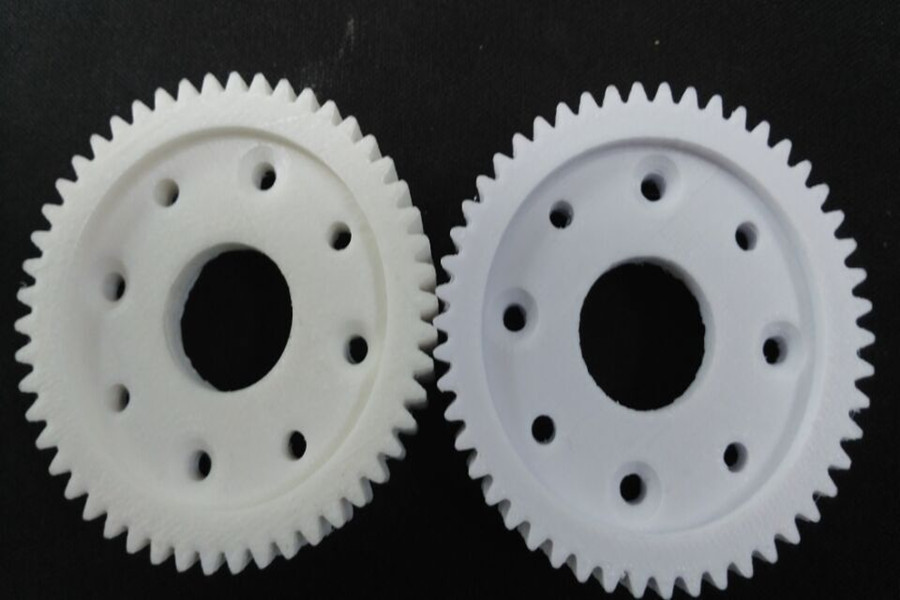
PC-ABS material
It is one of the most widely used engineering thermoplastics. PC-ABS has the toughness of ABS and the high strength and heat resistance of PC materials, and is mainly used in the automotive, household appliances and communications industries. The strength of the specimen made with this material and force measuring equipment is about 60% higher than that of the components made with the traditional fdm system, so you can use pc-abs to print out thermoplastic components, including conceptual models, functional prototypes, manufacturing tools and final parts .
PC-ISO material
It is a white thermoplastic material certified by the Ministry of Health, with high strength, and is widely used in the pharmaceutical and medical equipment industries. It is used in professional fields such as surgical simulation, skull restoration, dentistry and so on. At the same time, because it has all the characteristics of pc, it can also be applied to the food and pharmaceutical packaging industries. These samples can be used as conceptual models, functional prototypes, manufacturing tools and final parts.
PSU materials
It is an amber material with a heat distortion temperature of 189°C. It is the material with the highest strength, heat resistance** and corrosion resistance** among all thermoplastic materials. Usually used as a final component, widely used in aerospace, transportation and ** industries.. psu materials can bring a direct digital manufacturing experience, and the performance is very stable. By working with rortus equipment, amazing results can be achieved.
Thermoset plastic
Thermosetting resins such as epoxy resins, unsaturated polyesters, phenolic resins, amino resins, polyurethane resins, silicone resins, aromatic heterocyclic resins have the characteristics of high strength and good flame retardancy, and are very suitable for powder lasers for 3D printing Sintering molding process. Materials scientists from the Harvard School of Engineering and Applied Sciences and the WYSS Institute of Bioengineering have jointly developed a 3D printable epoxy thermosetting resin material that can be 3D printed into building structures and used in light buildings.
Sweden will try to use this technology to print houses
④Photosensitive resin
The photosensitive resin is composed of polymer monomers and prepolymers. The liquid photosensitive resin is the preferred material for high-precision product printing due to its good liquid fluidity and instant light curing characteristics. The photosensitive resin has fast curing speed and good surface drying performance. After molding, the product has a smooth appearance, which can be transparent to translucent and frosted. In particular, the photosensitive resin has low odor and low irritation ingredients, which is very suitable for personal desktop 3D printing systems.
Common photosensitive resins are somos-next, somos11122, somos19120 and epoxy resin.
somos NEXT material
White material, grade PC new material, good toughness, can basically reach the performance of selective laser sintering (SLS, selective laser sintering) nylon material, the accuracy and surface quality are better.. Made of Somos NEXT material The components have the highest rigidity and toughness so far, while maintaining the exquisite craftsmanship, accurate size, and beautiful appearance of the light-cured three-dimensional modeling material. They are mainly used in automobiles, home appliances, consumer electronics and other fields.
3D printed radiator fan and earplug sleeve
somos11122 material
It looks more like a real transparent plastic, has excellent water resistance and dimensional stability, and can provide a variety of similar engineering plastics, including ABS and PBT, making it ideal for automotive, automotive and electronic products.
somos19120 material
It is made of pink, which is a special casting material. After forming, it can directly replace the wax film prototype of precision casting, avoiding the risk of mold development, shortening the cycle, and having the characteristics of low ash retention rate and high precision.
Epoxy resin
It is a laser rapid prototyping resin, easy to cast. Its ash content is very low (the residual ash content at 800°C is less than 0.01%). It can be used in fused silica and alumina high-temperature shell systems, does not contain heavy metal antimony, and can be used to manufacture extremely precise rapid casting molds.
⑤Rubber materials
Rubber materials have the characteristics of different grades of elastic materials. The hardness, elongation at break, tear strength, and tensile strength of these materials make them ideal for applications that require non-slip or soft surfaces. 3D printed rubber products mainly include consumer electronics, medical equipment, automotive interiors, tires, gaskets, etc.
⑥Metal materials
The metal powder used for 3D printing generally requires high purity, good sphericity, narrow particle size distribution, and low oxygen content. At present, the metal powder materials used in 3D printing are mainly titanium alloys, cobalt-chromium alloys, stainless steel and aluminum alloys, in addition to precious metal powder materials, such as gold and silver used in printing jewelry.
One-time manufacturing of rotor and blade combination, source: RSC Engineering Co., Ltd.
Metal 3D printing materials are widely used in petrochemical, aerospace, automobile manufacturing, injection molds, light metal alloy casting, food processing, clothing, papermaking, power industry, jewelry, fashion and other fields.
Metal powder rapid prototyping is the development trend of laser rapid prototyping from prototype manufacturing to direct rapid manufacturing. It can speed up the development of new products and has broad application prospects. In the selective sintering method of metal powder, there are three common metal powders:
(1) For a mixture of metal powder and organic binder, the two powders are uniformly mixed in a certain proportion, and then laser sintered.
(2) A mixture of two metal powders, one of which has a lower melting point and binder during the laser sintering process.
(3) For single metal powder, unit system sintering, especially high melting point metals, needs to reach the melting temperature in a short time, and a high-power laser is required. The main problem of direct metal sintering is the low density and poor mechanical properties of the parts due to the porous structure.
Tool steel metal material
The applicability of tool steel comes from its excellent hardness, wear resistance and deformation resistance, as well as the ability to maintain the cutting edge at high temperatures. Mold H13 hot work tool steel is one of them, it can withstand uncertain time.
Stainless steel metal material
Stainless steel is different from carbon steel. At present, the chromium content is different. The lowest steel alloy with chromium content of 10.5%, stainless steel is not easy to rust and corrode..
Austenitic stainless steel 316l has the characteristics of high strength, corrosion resistance, etc., and can be reduced to low temperature in a wide temperature range. It can be used in aerospace, petrochemical and other engineering fields, as well as in food processing and medical fields.
Maraging stainless steel 15 5PH, also known as maraging (precipitation hardening) stainless steel, has high strength, good toughness, corrosion resistance, and can be further hardened. At present, it is widely used in aerospace, petrochemical, chemical, food processing, paper and metal processing industries.
The maraging stainless steel 17≤4PH still has high strength and toughness at 315℃, and has strong corrosion resistance. In the state of laser processing, it has two kinds of excellent scalability.
Alloy metal materials
The most widely used metal powder alloys in 3D printing materials include pure titanium and titanium alloys, aluminum alloys, nickel-based alloys, cobalt-chromium alloys, and copper-based alloys.
Titanium alloy
The pure titanium used in the market, also known as commercially available pure titanium, is divided into 1 and 2 powders, grade 2 is stronger than grade 1, and has the same corrosion resistance for most applications. Pure titanium 2 has good biocompatibility and has broad application prospects in the pharmaceutical industry.
Titanium is the key to the titanium alloy industry. At present, titanium alloys used for 3D printing mainly include grade 5 titanium alloys and grade 23 titanium alloys. Due to its excellent toughness, corrosion resistance, low specific gravity and biocompatibility, it has very ideal applications in aerospace and automobile manufacturing. In addition, due to its high strength, low modulus, and strong fatigue resistance, it is used in the production of biomedical implants. Grade 23 titanium alloy, with high purity, is the same grade as dental titanium and medical titanium.
Aluminum alloy
Currently, aluminum alloys used for metal 3D printing mainly include AlSi12 and AlSi10mg. Al-Si 12 is a kind of lightweight material. It can be used for thin-walled parts such as heat exchangers or other auto parts, as well as industrial prototypes and production parts such as aerospace. The combination of silicon and magnesium makes the aluminum alloy have higher strength and hardness, which is especially suitable for thin-walled complex geometrical parts, especially in the case of good thermal performance and light weight.
Copper-based alloy-bronze powder
Copper-based alloys, commonly known as bronze, are widely used in the market. It has good thermal and electrical conductivity. It can combine design freedom to generate complex internal structures and cooling channels. It is suitable for more effective mold cooling of semiconductor devices, etc., and can also be used for micro heat exchangers. It has the characteristics of thin wall and complex shape.
Precious metal materials
3D printing products are becoming more and more influential in the fashion industry. Jewelry designers around the world seem to benefit from the use of 3D printing rapid prototyping technology**, because this is a powerful creative industry that can easily replace other manufacturing methods. In the field of jewelry 3D printing materials, gold, sterling silver, brass, etc. are commonly used.
⑦Ceramic materials
Ceramic materials have excellent characteristics such as high strength, high hardness, high temperature resistance, low density, good chemical stability, and corrosion resistance. They are widely used in aerospace, automotive, biological and other industries. 3D printed ceramic products are waterproof, heat-resistant (up to 600℃), recyclable, non-toxic, but low in strength, and can be used as ideal cookware, tableware (cup, bowl, saucer, egg cup, coaster), candle holder, ceramic tile , Vases, artwork and other home decoration materials.
However, due to the hard and brittle characteristics of ceramic materials, its processing and forming are particularly difficult, especially for complex ceramic parts that require mold forming. Mold processing costs are high, and the development cycle is long, making it difficult to meet the demand for continuous product updates.
Selective laser sintering of ceramic powder is to add a binder to the ceramic powder. The preparation process of the coated powder is similar to that of the coated metal powder. Coated ceramics can be Al2O3, ZrO2, SiC, etc. There are a variety of binders, including metal binders and plastic binders (including resin, polyethylene wax, organic glass, etc.), and inorganic binders can also be used.
use:
(1) The ceramic powder and the binder are uniformly sintered according to a certain proportion, and the ceramic shell is obtained after the second sintering treatment, and the ceramic shell is poured to obtain the manufactured metal parts.
(2) Engineering ceramic parts can also be manufactured directly. After sintering and hot isostatic pressing, the final relative density of the parts reaches 99.9%. In industry, it can be used for wear-resistant and heat-resistant ceramic parts such as oil-impregnated bearings.
⑧Composite gypsum powder (full-color sandstone)
The field of 3D printing is one of the most widely used materials. Objects made of full-color sandstone have a strong sense of color, and the surface of 3D printed products has a grainy feel, and the printed lines clearly give the object a special visual effect. It is more brittle and easily damaged, and is not suitable for printing objects that are usually placed outdoors or in extreme *environments.
But when designers want to print their designs in multiple colors, they usually choose colored sandstone. Because it can print various colors, the color level and resolution are very good. The model printed out of sandstone is extremely realistic. Therefore, full-color sandstone is widely used in indoor displays such as models, portraits, and architectural models.
⑨Blue wax and red wax
Using multi-nozzle stereo printing (MJM) technology, the surface is smooth; wax mold precision casting, surpassing the previous simple model making and display functions. Can be used for standard investment materials and casting processes. It is used to make collections of jewelry, clothing, clothing, mechanical parts, sculptures, replicas and paraffin wax models.
How to choose 3D printing materials?
How to choose a model for yourself, usually need to consider the following points:
Factors such as cost, material properties (mechanical properties, mechanical properties, chemical stability), details of the finished product after post-processing, and special application environments.
① Cost
As far as the most concerned costs are concerned (excluding post-processing and labor costs). By printing material balls with the same structural volume, according to the prices of various consumables provided by the Italian construction network, we found that in the production cost of the same 10000mm3 volume product: PLA plastic
Therefore, in terms of product cost, polylactic acid plastic and abs plastic are the lowest, and are most suitable for the use of low-cost consumables. It should be noted here that PLA plastic and ABS plastic material products are in a suspended structure during the design, or the inclined upward angle is 45 degrees, and requires additional support less than 45 degrees, that is, when the product When it is less than 45 degrees, the cost of the cost increases in disguise.
②Material performance
The following figure shows the material characteristics of some 3D printing consumables provided by Yizao.com. The hardness, transparency, size, and accuracy grades in the figure range from level 1 to level 5. This is the division from the lowest level to the third.
In the smallest details, 0.5 mm of PLA plastic and ABS plastic is smaller than 0.1 mm of blue wax and 1.0 mm higher than that of silver material. It is in the middle level and has no special features.
In terms of minimum wall thickness, for common products, the minimum wall thickness of 1.0 mm polylactic acid plastic and abs plastic is almost the same as the minimum wall thickness of 0.6 mm, which belongs to the normal range and can fully meet the molding needs of most common products. Similarly, although the minimum wall thickness can meet the needs of a large number of common products, it should be noted that when the thickness is not less than 1.0mm, deformation will occur during the printing process, resulting in printing failure.
In terms of the highest precision, due to the influence of the material itself, the highest precision of 0.3mm polylactic acid plastic is slightly lower than the average value, while the highest precision of 0.1mm abs plastic is slightly lower than the average value.
It is relatively better. However, the highest precision of this kind is already comparable to the highest precision of some industrial levels, and it can meet the production requirements of creative products.
At the same time, the fdm process corresponding to pla plastic and abs plastic is relatively simple and can be printed and produced by a desktop computer. Compared with industrial machines, the use of desktop machines may have a slight gap in accuracy and mass production, but it can certainly meet normal product requirements, with lower cost and more convenient production.
③Post processing
For the post-treatment of the product, in terms of color, there are methods such as painting (coloring), dip dyeing, and electroplating. Because the domestic dyeing process is immature, the cost is high, the electroplating operation is complicated, and the cost is relatively high, so for convenience, spraying (coloring) is currently the most convenient. Of course, for pla plastic and abs plastic, there are many color options, almost all colors can be selected, and it is relatively simple.
For the appearance, texture and support treatment of PLA plastic, the three-dimensional model of PLA material is hard and heat-resistant. If the grinding is rougher and rougher, there is currently no good appearance texture and support treatment. For abs plastic, although it can be polished, using a certain proportion of alkaline solution can make the surface smooth and the surface treatment effect will be better.
④Application direction
In addition to the above three factors, based on the purpose of making a print model, the application direction can be roughly divided into two categories: appearance verification and structure verification.
Appearance verification model: a manual model designed by an engineer to verify the appearance of a product or a model that is directly used and requires a high appearance. The appearance verification model is visible and touchable. It can reflect the designer’s creative thinking in the form of objects and avoid the shortcomings of “drawing a good picture is not good.”. In the process of new product development and product appearance evaluation, the establishment of an appearance verification model is essential.
Based on the requirements of the appearance verification model, photosensitive resin type 3D printing (including ABS resin and transparent PC material) is preferred.
Structural verification model: In the product design process, from design to mass production, it is generally necessary to make molds. Mold manufacturing costs are high, and large molds are worth hundreds of thousands or even millions. If the structure is found to be unreasonable or other problems occur during the mold opening process, the loss is predictable. Therefore, the establishment of a structural verification model can avoid this loss and reduce the risk of mold opening.
According to the requirements of the structural verification model, if the accuracy requirements and surface quality requirements are not high, it is recommended to select materials with good mechanical properties and low prices, such as PLA, ABS and other materials.
In addition, there are some special requirements. For example, if you have requirements for electrical conductivity, you need metal materials, or you want to make beautiful jewelry in reverse, blue wax is recommended.
The main application direction of the material
Of course, after a clear and reasonable division of materials and a clear awareness of performance, as practitioners in the 3D printing industry, we need to have a general understanding of the application direction of materials.
According to the editor, the most commonly used 3D printing materials on the market include plastics (abs, pla, nylon, photopolymers, etc.) and metals (steel, silver, gold, titanium, aluminum, etc.). In these two categories, they can be reclassified according to market applications and market demands.
(1) The most widely used market
Judging from the current market situation, plastic materials are the mainstream in the production of consumer goods. To put it simply, what we see in our daily lives
3D printing products, its production materials are nothing more than ABS, PLA, nylon and photopolymer these four.
(2) The most widely demanded market
If the market needs and the longest development point of view in the future, the market for metal materials manufactured by products is very urgent. Especially in the application of aerospace, defense, automobile, ** and other industries, there is a lot of room for development.
Compared with traditional manufacturing technology, 3D printing does not require pre-fabrication of molds, does not need to remove a large amount of material in the manufacturing process, and does not require a complex forging process to obtain the final product. Therefore, structural optimization, material saving and energy saving can be realized in production. Three-dimensional printing technology is suitable for new product development, rapid single- and small-batch part manufacturing, complex-shaped parts manufacturing, mold design and manufacturing, and difficult-to-machine material manufacturing, shape design inspection, assembly inspection, and rapid reverse engineering. Therefore, the 3D printing industry has attracted more and more attention at home and abroad, and will become the next sunrise industry with broad development prospects.
Link to this article: What are the commonly used materials for 3D printing?
Reprint Statement: If there are no special instructions, all articles on this site are original. Please indicate the source for reprinting:https://www.cncmachiningptj.com
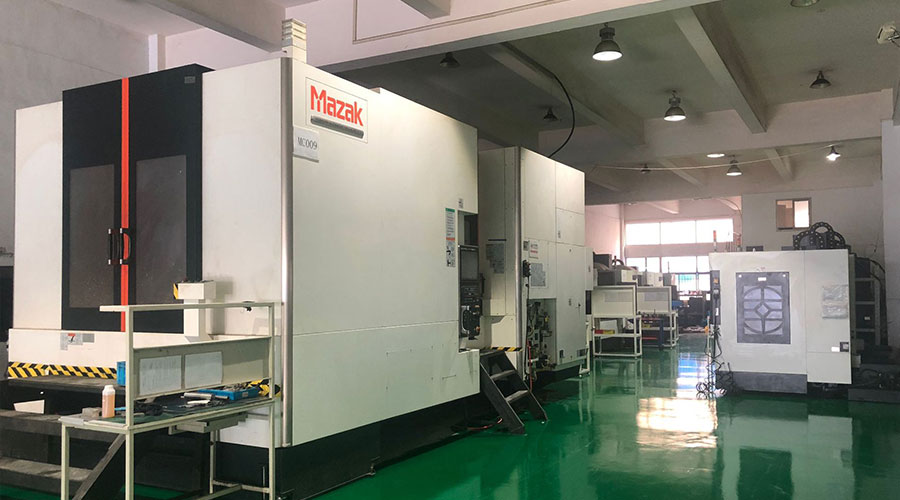 PTJ® provides a full range of Custom Precision cnc machining china services.ISO 9001:2015 &AS-9100 certified.
PTJ® provides a full range of Custom Precision cnc machining china services.ISO 9001:2015 &AS-9100 certified.
Machining shop specializing in fabrication services for construction and transportation industries. Capabilities include plasma and oxy-fuel cutting, Tailored machining, MIG and Custom Aluminum Cnc Precision Milling Welding Jig Fixture, roll forming, assembly, Lathe machining stainless steel cnc machine shaft, shearing, and CNC Swiss Machining services. Materials handled include carbon and Passivation Stainless Steel Machining Cover Plate Parts.
Tell us a little about your project’s budget and expected delivery time. We will strategize with you to provide the most cost-effective services to help you reach your target,You are welcome to contact us directly ( [email protected] ) .
Link to this article:What are the commonly used materials for 3D printing?
Reprint Statement: If there are no special instructions, all articles on this site are original. Please indicate the source for reprinting:Tungusten,Thanks!^^

